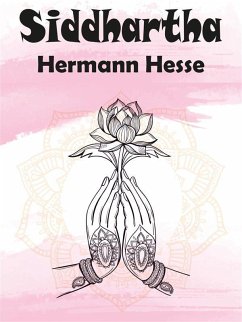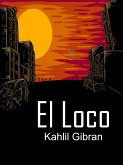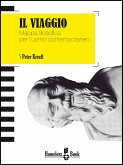La novela relata la vida del hijo de un brahman (sacerdote), Siddharta, un joven hindú que busca su camino. Junto a él se encuentra Govinda, amigo del joven. En resolución común deciden ir a vivir con los Samanas, abandonando fríamente a sus familias. Los Samanas son hombres de alma religiosa, meditadores, que viven al acaso, con poco o nada, y que sobreviven en su mansa peregrinación con lo que hallan en el camino. En esta etapa de su vida aprende a ayunar, meditar y esperar, capacidades que le servirán más adelante en su vida.
Es después de haber convivido con ellos que ambos resuelven ir a ver a Buda (Gotama). En ese trance Govinda toma la decisión, no compartida por el amigo, de unirse al grupo que visitan. En consecuencia, Siddhartha, a partir de ese momento, quedará vitalmente solo. Y peregrinando ha de arribar a una ciudad en la que ha de conocer a la bella Kamala, con la que se lanzará a vivir lo nunca vivido.
La extraordinaria maestría de Hesse se pone en descubierto en los capítulos relacionados con Kamala, a la que jamás denomina con un apelativo de connotación negativa, al que daría lugar el oficio liviano y «desprejuiciado» al que la mujer vive entregada.
Siddhartha, de modo espontáneo y en ocasiones deliberadamente resuelto, se dispone a aprender los secretos del amor a partir de su contacto con ella, compartiendo, al mismo tiempo los menesteres del trabajo, de la ganancia de dinero, de los gastos dispendiosos y de las diversiones ostentosas. Y así se nos presenta a un hombre que, siendo al principio un modelo inmaculado, ahora aparece sujeto a todas las normales debilidades humanas. Es el mismo Siddhartha que consideraba negativos y despreciables esos comportamientos, para un alma de estirpe, y de naturaleza superior como la suya.
Es después de haber convivido con ellos que ambos resuelven ir a ver a Buda (Gotama). En ese trance Govinda toma la decisión, no compartida por el amigo, de unirse al grupo que visitan. En consecuencia, Siddhartha, a partir de ese momento, quedará vitalmente solo. Y peregrinando ha de arribar a una ciudad en la que ha de conocer a la bella Kamala, con la que se lanzará a vivir lo nunca vivido.
La extraordinaria maestría de Hesse se pone en descubierto en los capítulos relacionados con Kamala, a la que jamás denomina con un apelativo de connotación negativa, al que daría lugar el oficio liviano y «desprejuiciado» al que la mujer vive entregada.
Siddhartha, de modo espontáneo y en ocasiones deliberadamente resuelto, se dispone a aprender los secretos del amor a partir de su contacto con ella, compartiendo, al mismo tiempo los menesteres del trabajo, de la ganancia de dinero, de los gastos dispendiosos y de las diversiones ostentosas. Y así se nos presenta a un hombre que, siendo al principio un modelo inmaculado, ahora aparece sujeto a todas las normales debilidades humanas. Es el mismo Siddhartha que consideraba negativos y despreciables esos comportamientos, para un alma de estirpe, y de naturaleza superior como la suya.
Dieser Download kann aus rechtlichen Gründen nur mit Rechnungsadresse in A, B, BG, CY, CZ, D, DK, EW, E, FIN, F, GR, HR, H, IRL, I, LT, L, LR, M, NL, PL, P, R, S, SLO, SK ausgeliefert werden.










gretwidm.jpg)